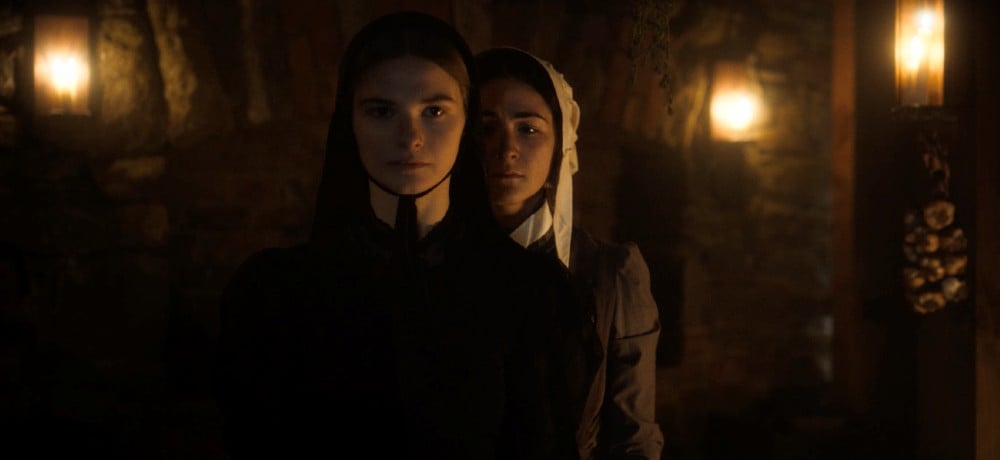


In a film landscape that is oversaturated with a lot of the “same ole, same ole,” it’s easy to be dismayed or overly critical of films that walk a well-worn path. Features like The Last Thing Mary Saw serve as a needed reminder that tropes are used often for a reason and that even familiar stories can have fresh perspectives. It’s all about the quality of the work and, in that respect, The Last Thing Mary Saw delivers.
The Last Thing Mary Saw is written and directed by Edoardo Vitaletti and stars Isabelle Fuhrman, Judith Roberts, Stefanie Scott, and Rory Culkin. The scene is 1840s New York. A young woman named Mary (Stefanie Scott) is growing up in the cruel repression of an extremely religious household. Her only joy is in her secret love affair with the home’s maid, Eleanor. Though the young lovers suffer increasingly severe punishments for their perceived sins, Eleanor and Mary are desperate to cling to what they have. Strange forces are at work in the house and time is running out as their situation becomes direr.
We’ve seen this film before. The trials and tribulations of a lesbian couple, exploring their forbidden love against the backdrop of some period film where the only thing more buttoned up than the costumes are the morals. The Last Thing Mary Saw falls in step with this tradition of historic queer romances, with other familiar flavors like Puritanical values and the ever-present threat of the Devil and his works.
The film endeavors to cast a critical eye towards religious extremism and the story of the doomed lovers is punctuated with sharp commentary. The Last Thing Mary Saw calls into question ideas of traditional authority, religious prejudice, and the true meaning of loyalty. Its more sophisticated notes are of the delicate balance struck between being altruistic and vengeful. As a couple, Mary and Eleanor are driven by their devotion to each other and their desperation to remain together. But the edges of their happiness begin to fray when they begin to explore what each of them are capable of and what they are and are not willing to do to make their escape.
The Last Thing Mary Saw is at its best as a slow-burn piece of atmospheric horror. The entire film is dark and unsettling, haunting, and painfully tense. The dread of the film seeps into your bones and leaves you with an empty chill, as the credits roll. Cruelty is the featured ingredient of The Last Thing Mary Saw and every element of the film – aesthetics to nuanced performances – is tinged with it. Really well done.
The Last Thing Mary Saw isn’t breaking new ground with its story, but it’s carrying off its brand of horror and tragedy incredibly well. What audiences will feel, as the film washes over them, is infinitely more important than any message the film may be trying to get across. Beautifully assembled, haunting, and cold, The Last Thing Mary Saw is highly effective horror.
[The Last Thing Mary Saw held its World Premiere at the 2021 Fantasia International Film Festival on August 15. A second screening has been scheduled for August 17.]
Movie Score: 3/5